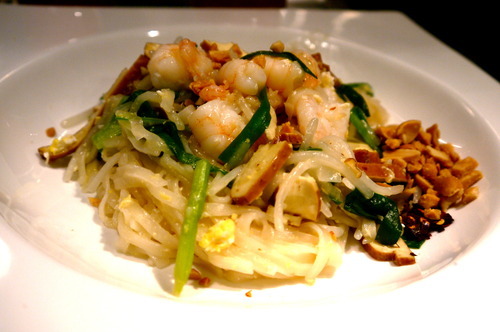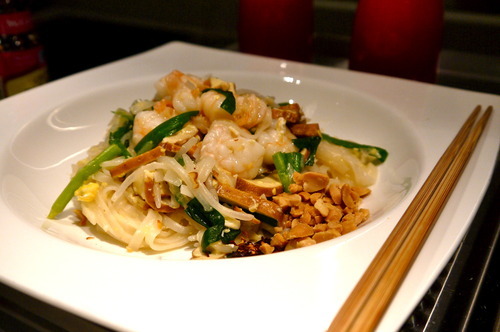ผัดไทย Pad Thai with Crystal Shrimp
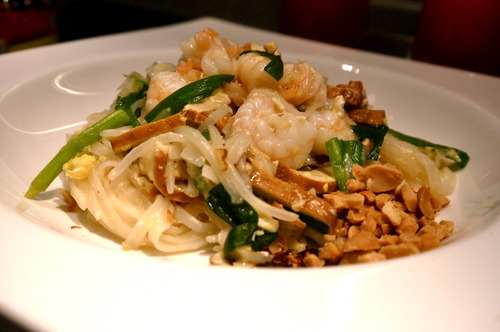
Whenever I think about Pad Thai, I am reminded of wonderfully relaxing holidays on white sandy beaches in Thailand, sipping freshly shucked coconuts and scuba diving in beautiful reefs in the “land of smiles”. Tasting the layers of complexity in this ironically, simple dish, is what makes Pad Thai memorable to me.
I’ve had the unfortunate experience of tasting several “commercialised” Pad Thai, where the sauce is sticky, glowing red, and obviously mixed with ketchup that I’ve finally declared “enough!”. Hence, I’ve set out to make my own version with as much adherence to the traditional recipe as possible. Here in Hong Kong, we are lucky enough to have access to many Southeast Asian ingredients, so below is my quick, simple, and (hopefully) authentic take on the intricacies of this timeless dish.
What you’ll need (serves 2):
- 150g dry Pad Thai rice noodles
- 3 cloves of garlic
- 2 shallots
- a handful of chives
- a handful of bean sprouts
- 100g of extra firm tofu
- 1 egg
- 150g fresh shrimp, deveined
- a handful of crushed peanuts
- 1.5 tbls of tamarind paste
- 4 tsp fish sauce
- 2 tbls sugar
- 1 Thai lime (for garnish)
- Chili flakes (for garnish)
Like a house, a good Pad Thai starts with a sound foundation, and in this case, that foundation is the rice noodles. It’s important to get the right consistency of noodle before attempting anything else with this recipe. Choose a medium thick (0.3cm) dry rice noodle, and soak the batch in plenty of room temperature water for around 30-40 minutes. A way to tell if the noodles are ready is if they can be wrapped around the finger without breaking, but taste unpleasant and a bit too chewy to eat. Note: Do not use boiling water as it will draw out all the starch and make the noodles gummy and sticky!
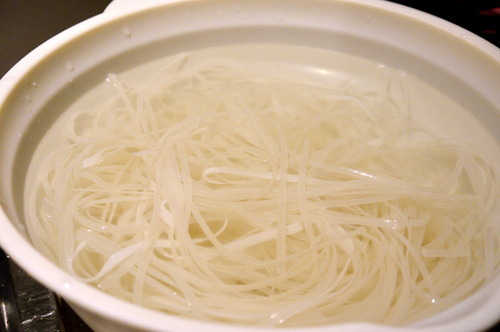
While the noodles are enjoying their water bath, finely dice 3 cloves of garlic and 2 shallots. Wash the green chives and cut them into 3cm segments.

Wash and deveined the fresh shrimps. I hate overcooked, rubbery shrimp, so the best way to avoid this is to scrunch the shrimps with a good sprinkling of salt, and then washing them under cold running water until there is no foam in the water. This guarantees clean, crisp tasting shrimp with plenty of bounce, EVERY TIME!
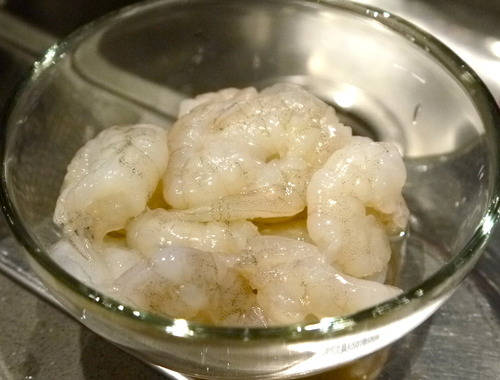
Wash and pick wispy ends off bean sprouts (I mixed them up with the chives).
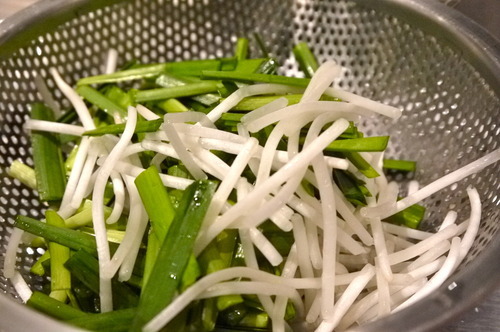
Slice the extra firm tofu.
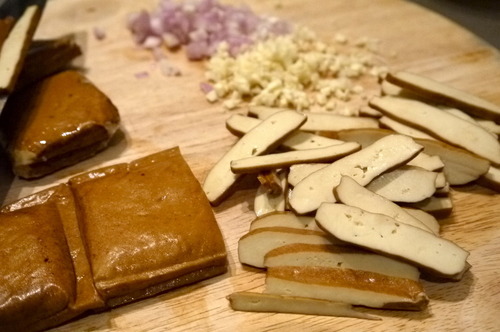
Get your sauce ready! I soaked / mixed the tamarind paste (you can get this at Oliver’s!) with a bit of water, then combined in the pungent fish sauce, and sugar. Tamarind is super sour on its own, but adds beautiful flavour components.
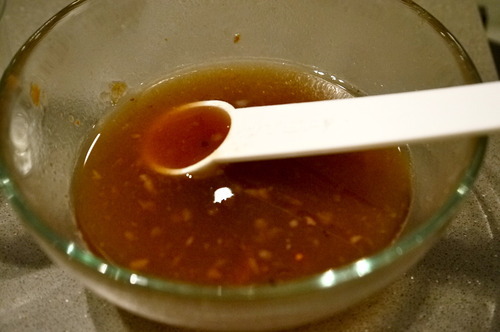
Crush roasted peanuts for garnish.

First up, the aromatics – sauté the shallot and garlic in a tsp of cooking oil over medium / high heat for a minute.
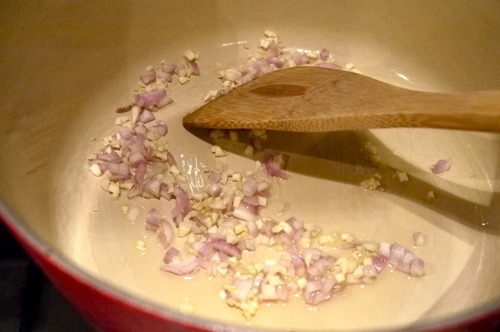
Add in the sliced extra firm tofu and lightly saute for a couple of minutes.
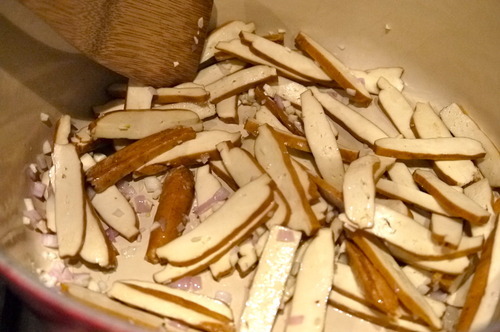
Drain the rice noodles and add them to the pot. Don’t be worried if the noodles seem a bit hard at this point, they will soften with the cooking process. *Remember, you want slightly chewy noodles that don’t glum together at then end.
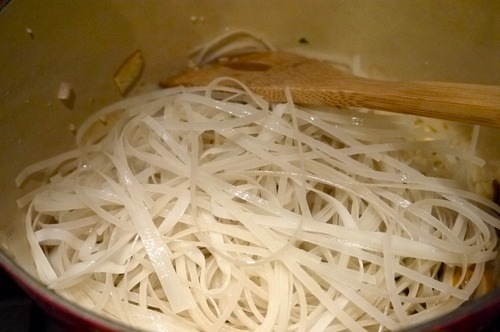
Pour in the tamarind / fish sauce with sugar, and toss well with the noodles and tofu.
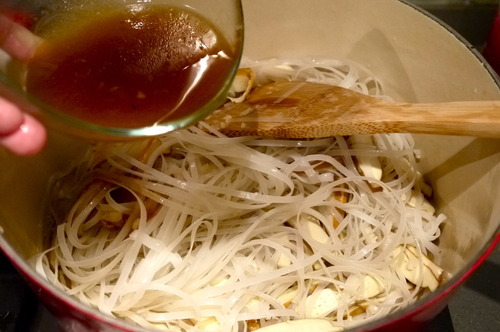
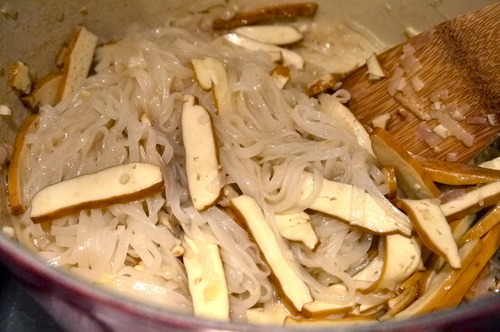
Keep in mind to constantly stir the mix, as the noodles / tofu could begin to stick to the pot. If the mix is starting to dry out and stick, add a little bit of water. You will start seeing the noodles further soften.
Now, if I were more of an industrious person, I would have scrambled the egg in another pan before adding it to the noodles………
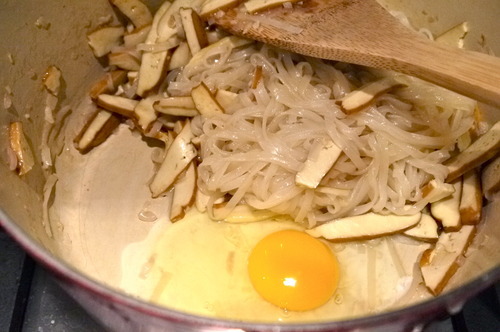
But……not feeling quite so industrious (and perhaps, a bit more practical) I moved the noodles to one side and scrambled the egg in the same pot.
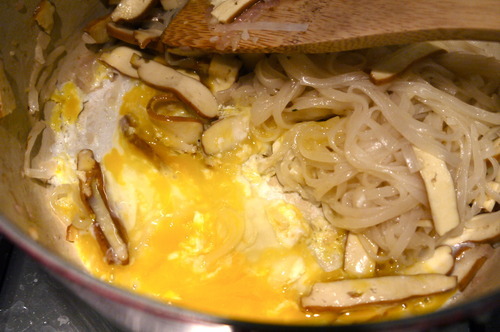
Mix the egg with the noodles, and pour in the fresh shrimp, bean sprouts and chives.
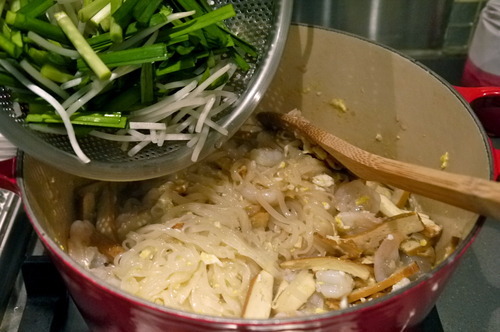
Mix well over medium / high heat for 3 minutes or until the shrimps are pink.
Plate and serve alongside crushed peanuts, a little pinch of chill flakes (I like to leave the spiciness level at the preference of the diner), and a squeeze of zesty Thai lime.
Bon Appetit!
